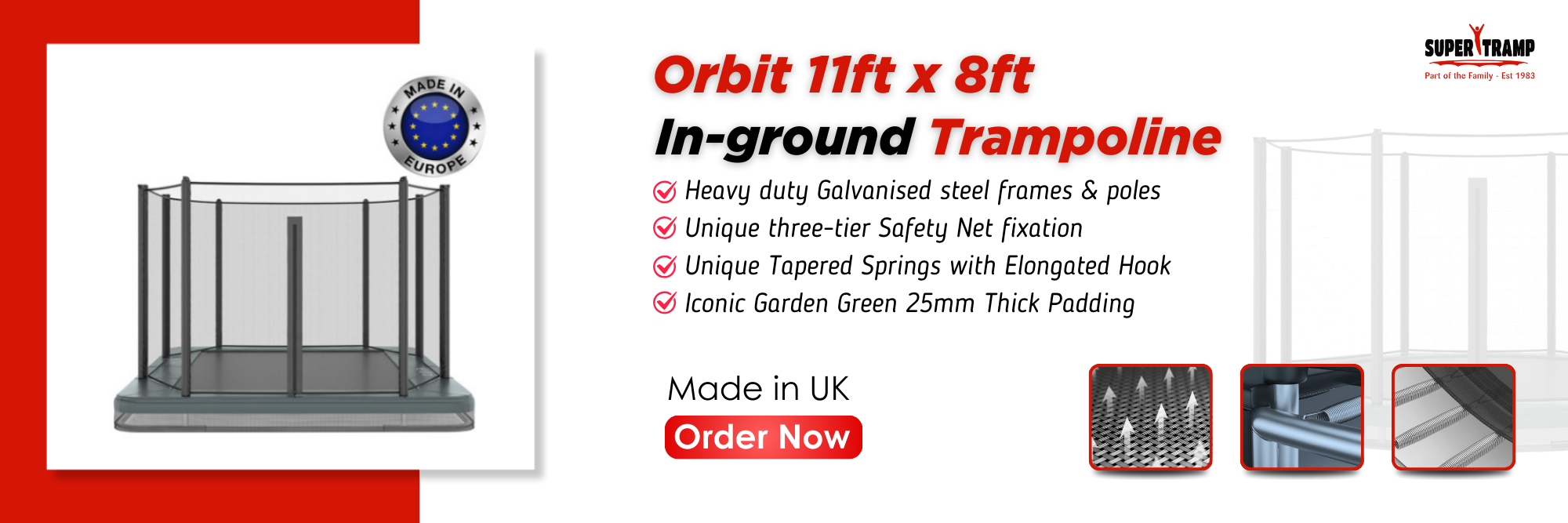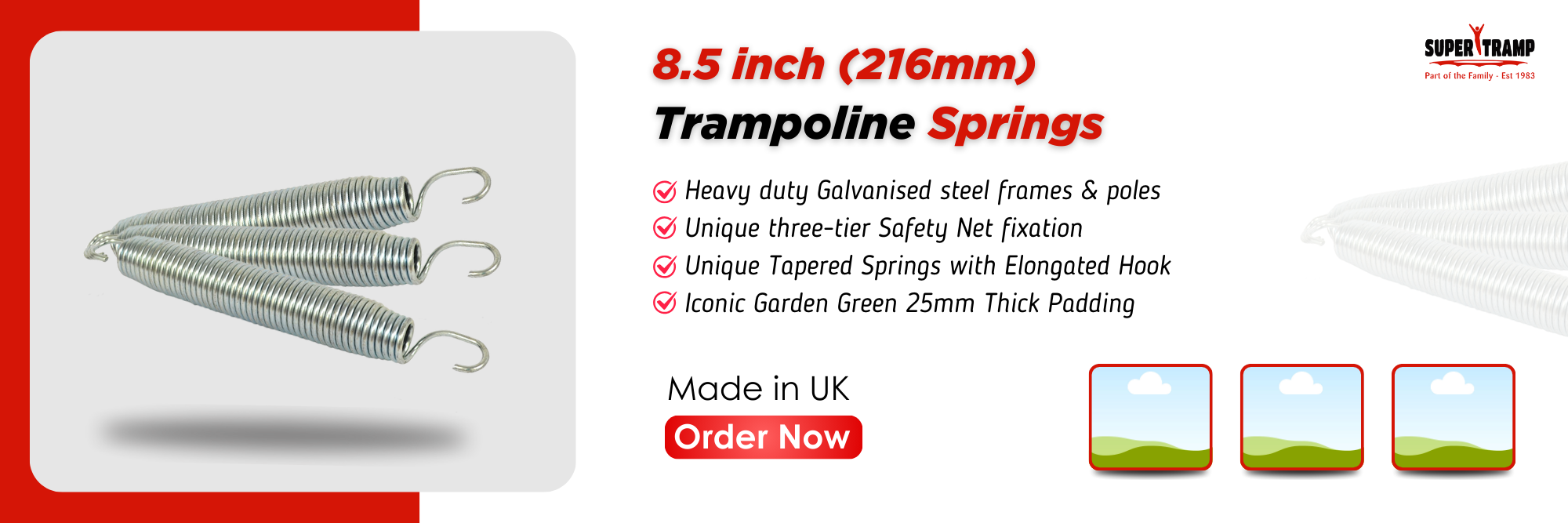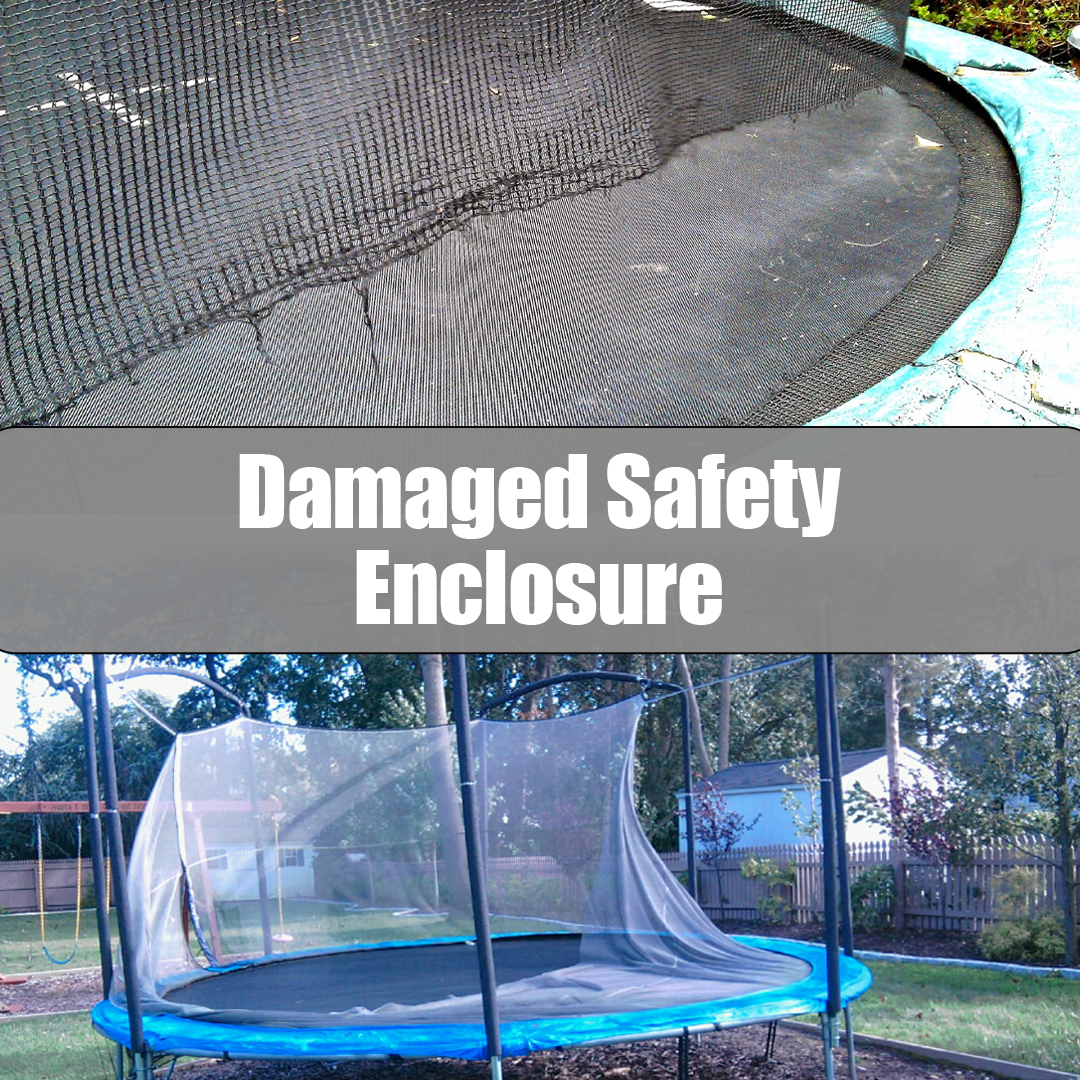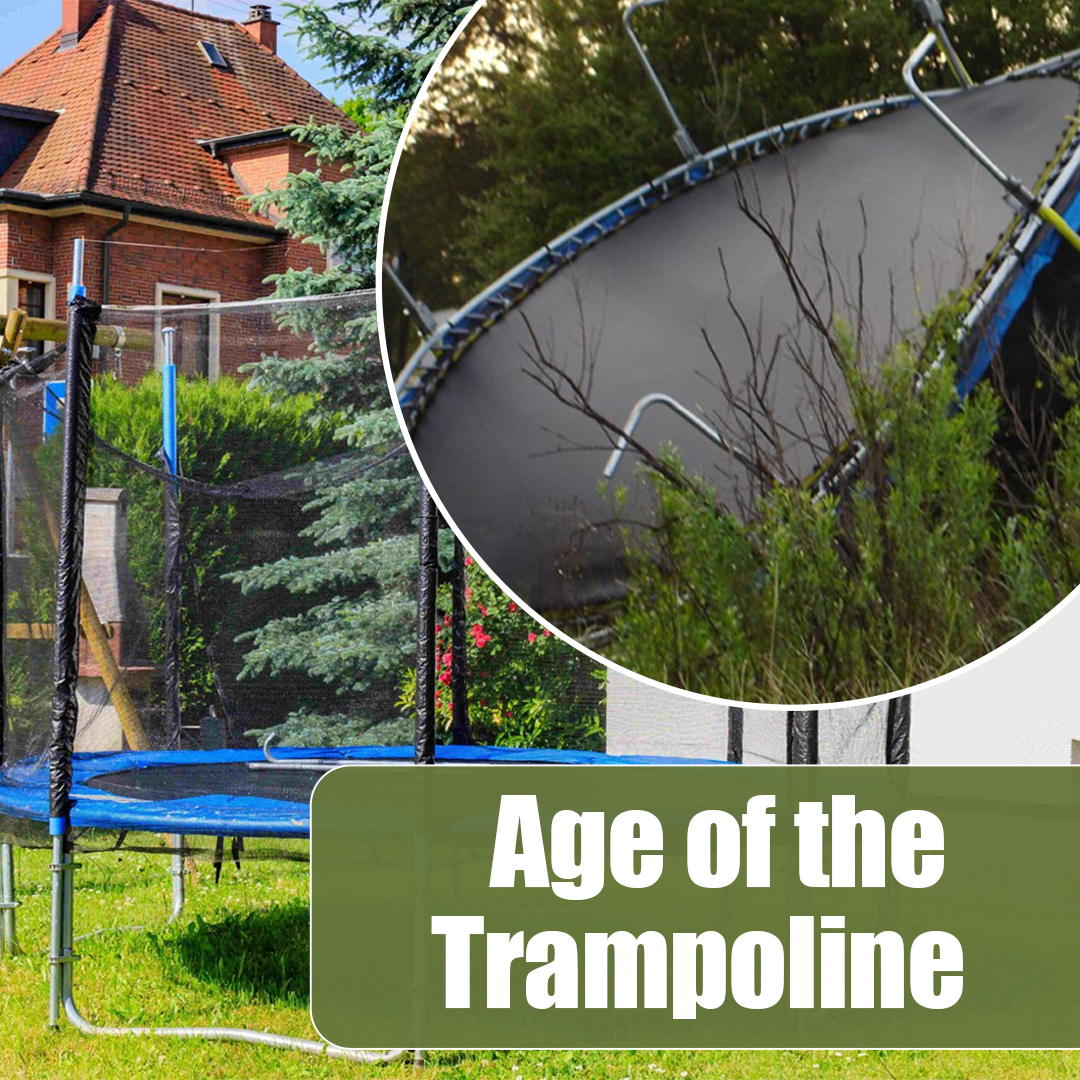You love having a trampoline in the garden for the children, but when was the last time you checked if it’s still safe? It’s easy to forget about maintenance until someone gets hurt. Don’t wait for an accident to happen.
Table of Contents
ToggleLook out for these five warning signs that your above ground trampoline and in ground trampoline needs replacing and make safety your top priority. We’ll guide you through what to watch out for, from rusty springs to worn padding, and explain why it’s not worth just patching things up. With some simple checks and a bit of DIY know-how, you can make sure your old trampoline doesn’t turn into a death-trap. Protect your family by staying one step ahead.
In this blog, you will know about 5 warning signs your trampoline needs to be replaced.
Visible Wear and Tear
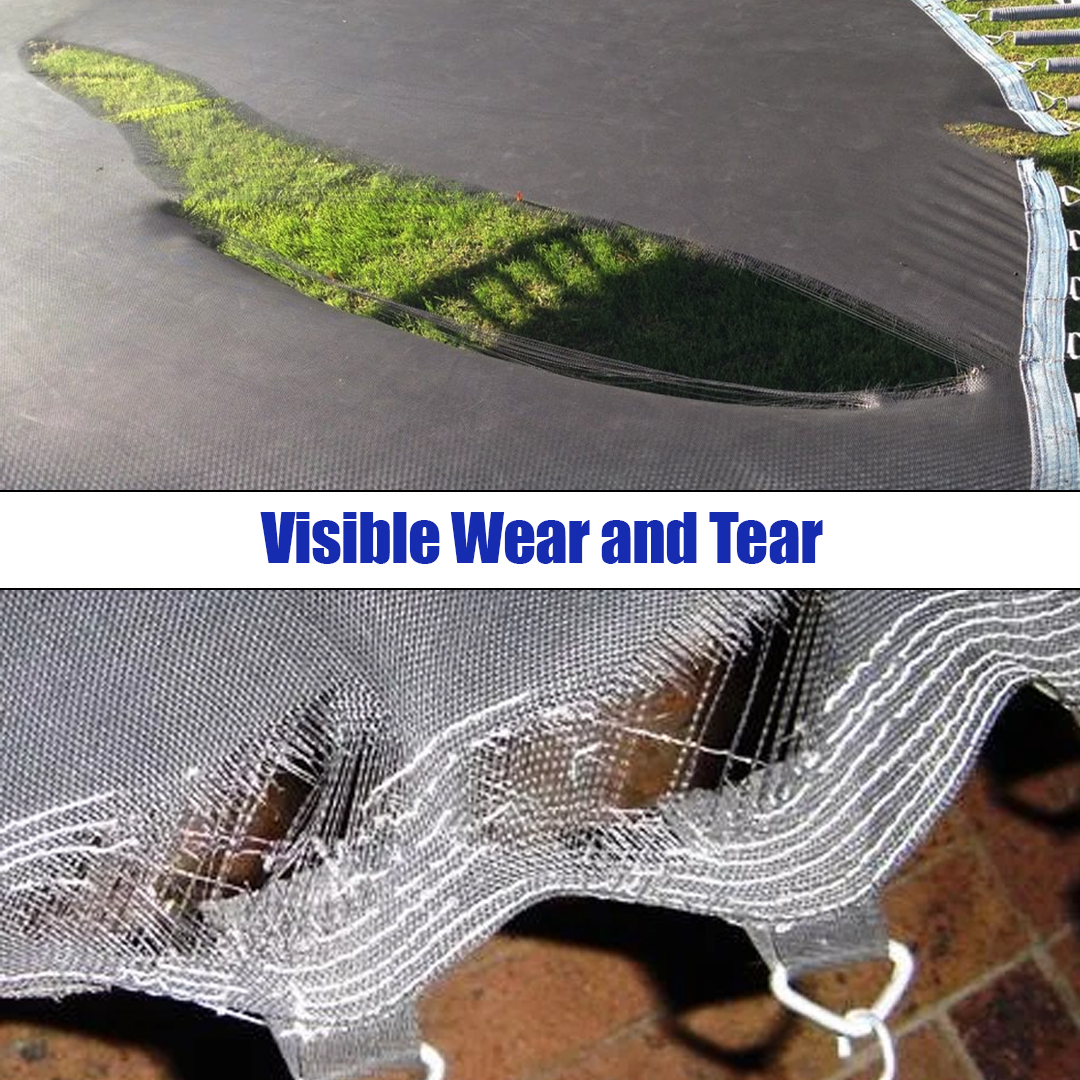
Trampoline undergoes gradual deterioration over time with frequent use. It’s critical to regularly inspect your normal or bespoke trampoline, which is custom made, for visible signs of damage or ageing that could put jumpers at risk.
Some tell-tale signs it may be time to replace your trampoline include:
- Rust or corrosion: Exposed metal parts like springs, frames, and pads that have become rusty can fail more easily and cause injuries. Rust also weakens the structure of the trampoline.
- Tears, holes, or fraying in the jumping pad: The jumping pad, mat, or bed eventually wears out, developing small tears, punctures, or areas where the stitching has come undone. These compromised areas of the pad are more prone to causing sprains, fractures, and other harms.
- Sagging or damage to the safety netting: The netting that surrounds a trampoline also deteriorates over time. Netting that has become badly stretched out, torn, or has holes in it may not prevent jumpers from falling off or catching extremities in the gaps.
- Warped or broken frame: The metal frame that provides the trampoline its shape and structure can become bent, dented, or even snap over years of use, especially if the maximum weight limit has been exceeded. A warped or broken frame is extremely unstable and dangerous.
- Missing, worn, or damaged pads and springs: The thick pads that cover the springs and the springs themselves need to be securely attached, intact, and in good condition. Missing, torn, or bent pads and springs pose risks like pinch points, cuts, and hard impacts.
Routinely checking your garden trampoline for these tell-tale signs of deterioration is essential for the safety of anyone who uses it. If damage is found, it’s best to replace the trampoline to avoid potential harm. Your family’s well being is worth the investment in a new, well-constructed trampoline.
Unstable Frame or Legs
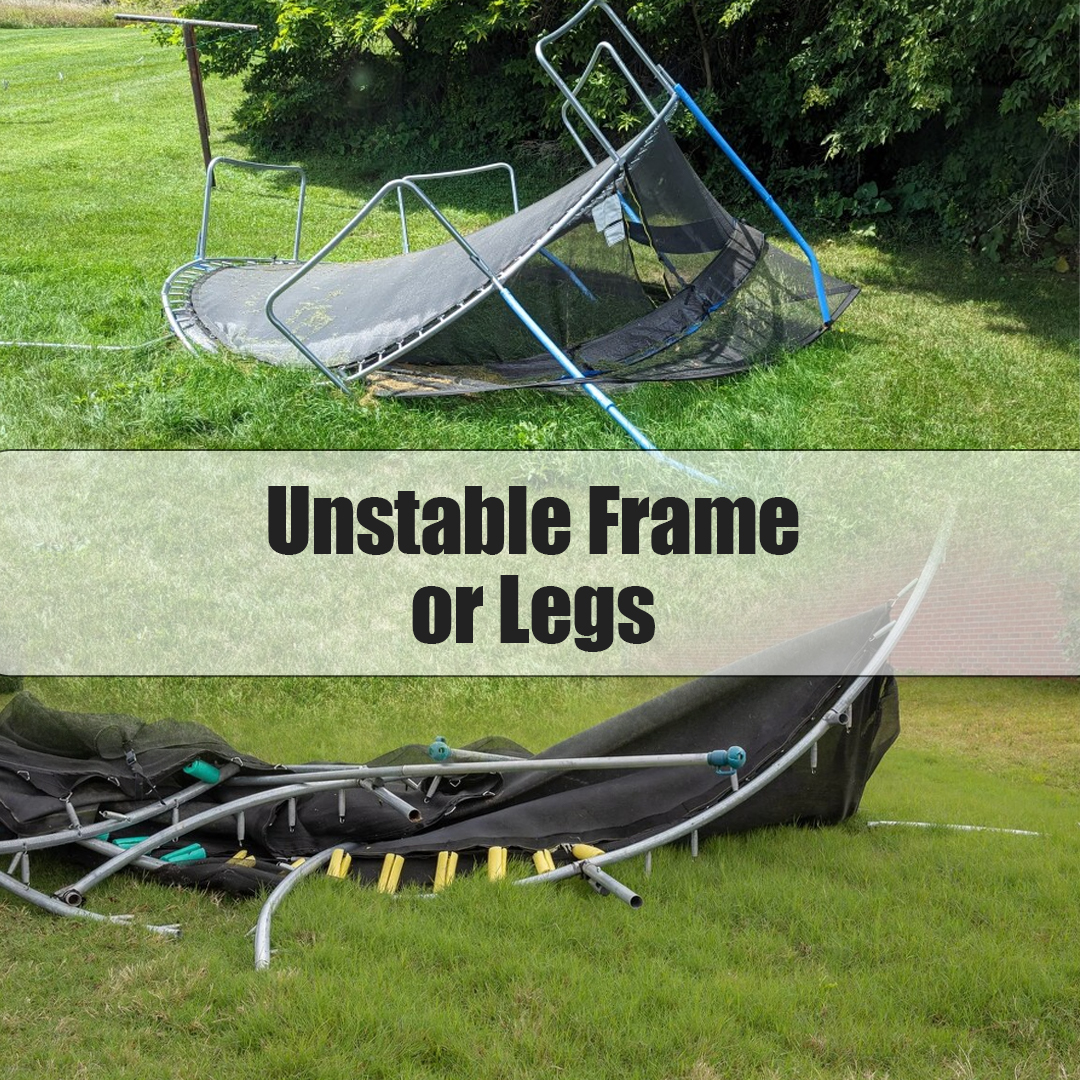
If your round trampoline frame or legs seem wobbly or uneven, it’s time to replace it. An unsteady frame can lead to dangerous accidents and injuries.
Check that the frame is sitting evenly on the ground. If one side seems lower or wobbly, the legs or base may be damaged or corroded. Unevenness in the frame can also put extra stress on the springs and mat, causing them to wear out more quickly.
Look for signs of corrosion or rust around the legs, especially where they connect to the frame. Rust weakens the metal and can make the legs unstable or even cause them to break. If the trampoline rocks from side to side even slightly when pushed, the legs are no longer providing a solid base of support.
Using a 12ft trampoline with an unstable frame puts jumpers at high risk of falls and collisions. The mat may not remain evenly tensioned or properly aligned if the frame is warped or rocking. This can cause painful crashes into the springs or frame. There is also a chance the entire trampoline could topple over if the legs give out, especially if multiple people are jumping at once.
For the safety of yourself and anyone else who uses the trampoline, replace the frame or legs as soon as you notice signs of instability. Check second hand trampolines thoroughly before purchasing to ensure the frame and legs are in excellent condition. Your trampoline should sit solidly on level ground with no rocking or unevenness for maximum safety during play. Regular inspections of the frame and leg connections can help identify issues early before they become dangerous.
Weak or Sagging Trampoline Springs
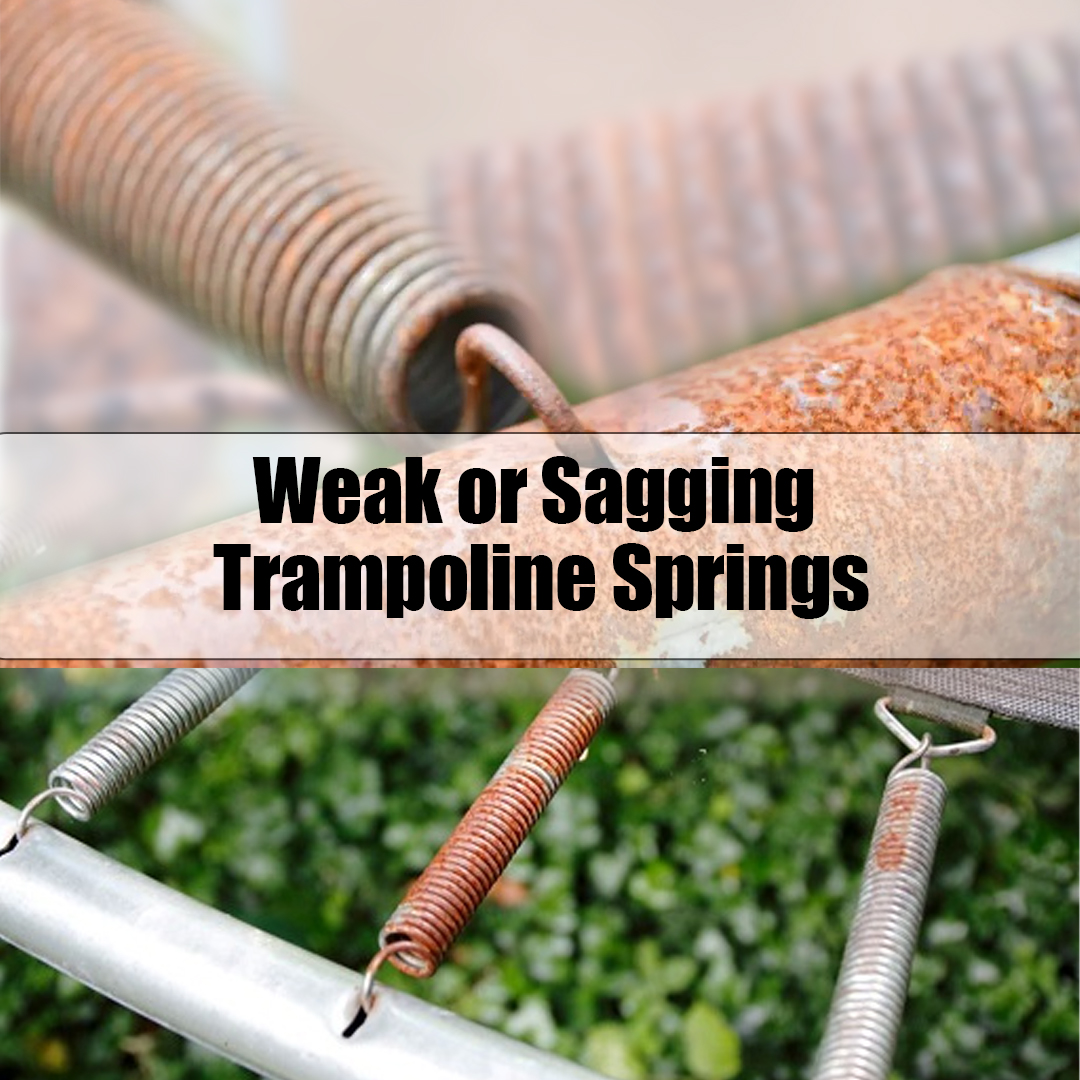
The 8.5 inch springs on your trampoline are responsible for providing the bounce and support for jumping. Over time, the springs naturally start to weaken and lose tension from constant use and exposure to the elements. If your trampoline’s springs are showing signs of ageing, it’s critical to replace them for safety.
You may notice the bounce feeling “off” or uneven, almost as if the mat is sloping to one side. Your jumps may feel heavier, like the springs aren’t propelling you up like they used to. Some springs may look visibly stretched out or misshapen. Give each spring a firm tug – they should feel taut and evenly tensioned. Sagging or damaged springs won’t provide the proper lift or stability for jumping.
Weakened springs also mean the safety netting and padding on your trampoline is no longer properly supported or tensioned. This poses risks of gaps or tears forming, and jumpers could hit the springs or frame. It’s not worth risking injury by using a trampoline with damaged springs.
Replacing your trampoline’s springs is essential for ensuring many more years of safe and fun jumping. Most manufacturers recommend replacing the springs every 3-5 years, depending on how often the trampoline is used. You can find replacement spring kits that include all the springs for your specific trampoline model. While it may require some elbow grease to swap out all the springs, you’ll gain peace of mind knowing your trampoline is safe and supported for the whole family to enjoy.
When in doubt about the condition of your trampoline’s springs, it’s best to replace them. Safety is the top priority, especially when it comes to high-impact activities like jumping on a trampoline. Investing in a quality, well-constructed trampoline and properly maintaining it will give you many years of bouncing bliss.
Damaged Safety Enclosure
The safety enclosure netting surrounding your trampoline is one of the most critical components for safe use. Without an enclosure, jumpers can easily fall or bounce off the trampoline, risking broken bones or other injuries. Over time, the weather and frequent use can cause damage to the enclosure netting. It’s important to regularly inspect your trampoline’s enclosure and replace it if there are any signs of damage.
Holes and tears
Carefully check the netting for any holes, rips, or tears. Even small openings can be a hazard. The enclosure netting takes the brunt of the impact from jumpers bouncing into it, so holes most often form along the edge of the netting where it attaches to the poles and the trampoline mat. If you notice any holes or tears in the netting, no matter how small, it’s best to replace the enclosure to avoid injury.
UV damage
If your trampoline sits outdoors, the sun’s UV rays can cause the enclosure netting to become brittle, fade, and weaken over time. Check that the netting still has good elasticity—it should still stretch tightly over the mat. If the netting has become saggy, discoloured, or shows signs of fraying along the edges, it likely needs replacement to properly contain jumpers.
Zips and attachments
Ensure that the zips, clips, straps, and other attachments securing the enclosure netting to the trampoline frame are all securely fastened and functioning properly. Damaged or malfunctioning components can allow the netting to come loose or detached, creating unsafe gaps and openings. For the safety of jumpers, it’s best to replace the enclosure if any critical attachments or fasteners are broken or not properly functioning.
Using a rectangle trampoline with a damaged safety enclosure poses serious risks of injury for anyone jumping on it. Regularly inspecting your trampoline’s enclosure netting and poles and replacing them when needed is key to safe enjoyment of your trampoline. Your family’s well being is worth the investment in a secure enclosure.
Age of the Trampoline
As your 14ft trampoline gets older, its materials will start to deteriorate, which can compromise safety. Most trampoline manufacturers recommend replacing your trampoline every 5 to 10 years to ensure it remains structurally sound.
After a few years of use, the springs and mat can become worn out and saggy, and the frame may start to weaken or rust. The safety padding around the springs also tends to break down over time, leaving dangerous gaps. These kinds of age-related damage increase the risk of injury if you continue using an older trampoline.
It’s a good rule of thumb to replace your trampoline once it’s reached the maximum recommended age set by the manufacturer. They design and test their trampolines to ensure optimal safety and performance standards are met within a certain time period. If your trampoline model is no longer made, you may need to replace it sooner.
Some signs it may be time for a replacement:
- The springs or mat feel loose or saggy.
- The padding around the springs is damaged or missing.
- The frame shows visible signs of rust or corrosion.
- You notice any rips, tears, or holes in the mat or netting.
- It makes creaking, squeaking, or grinding noises when in use.
- Parts are visibly bent, dented, or damaged.
While it can be tempting to keep using an older trampoline to get maximum value from your investment, safety should be the top priority. An ageing trampoline poses many hazards and the risk of injury increases over time. For your family’s well being, it’s best to replace your trampoline once it shows signs of age-related wear or reaches the end of the recommended lifespan. Your children’s safety is worth the investment in a new, well-constructed trampoline.
Conclusion
These were the 5 key warning signs that mean it’s probably time to replace your trampoline for safety’s sake. We know it can be hard to say goodbye to the old faithful garden tramp that’s given your family years of bouncing fun. But it’s just not worth the risk of injury if the mat or springs are past their best. Invest in a new high quality trampoline – your children will have endless hours of healthy outdoor playtime and you can relax knowing you’ve put safety first.
FAQ's
Do trampolines go rusty?
Yes, trampolines can develop rust over time, especially if they are exposed to moisture or harsh weather conditions. Regular maintenance and protective measures can help prevent rusting.
What will damage a trampoline?
Several factors can damage a trampoline, including exposure to extreme weather conditions, improper assembly or use, lack of maintenance, and excessive weight or pressure on the mat and springs.
Do trampolines get bouncier over time?
In some cases, trampolines may lose their bounce over time due to wear and tear on the springs and mat. However, proper maintenance and care can help preserve the bounce and performance of the trampoline.
How do I know if my trampoline is safe?
To ensure your trampoline is safe, regularly inspect it for signs of damage or wear, such as rust, tears in the mat or padding, loose or missing springs, and instability in the frame. Follow manufacturer guidelines for maintenance and safety precautions.
How often do trampolines need to be replaced?
The lifespan of a trampoline can vary depending on factors such as usage, maintenance, and quality. On average, trampolines may need to be replaced every 5 to 10 years, but regular inspections and maintenance can help prolong their lifespan.
DON'T MISS...
- The Top 7 Myths About Trampoline - You Should Know
- The Positive Effects of Playground Trampoline on Children's Well-being
- How To Pick The Perfect Playground Trampoline For Your Garden
- 5 Strong Reasons to Add a Commercial Trampoline in Schools and Universities
- Strong Reason to Choose a Bespoke Trampoline Over a Standard One


